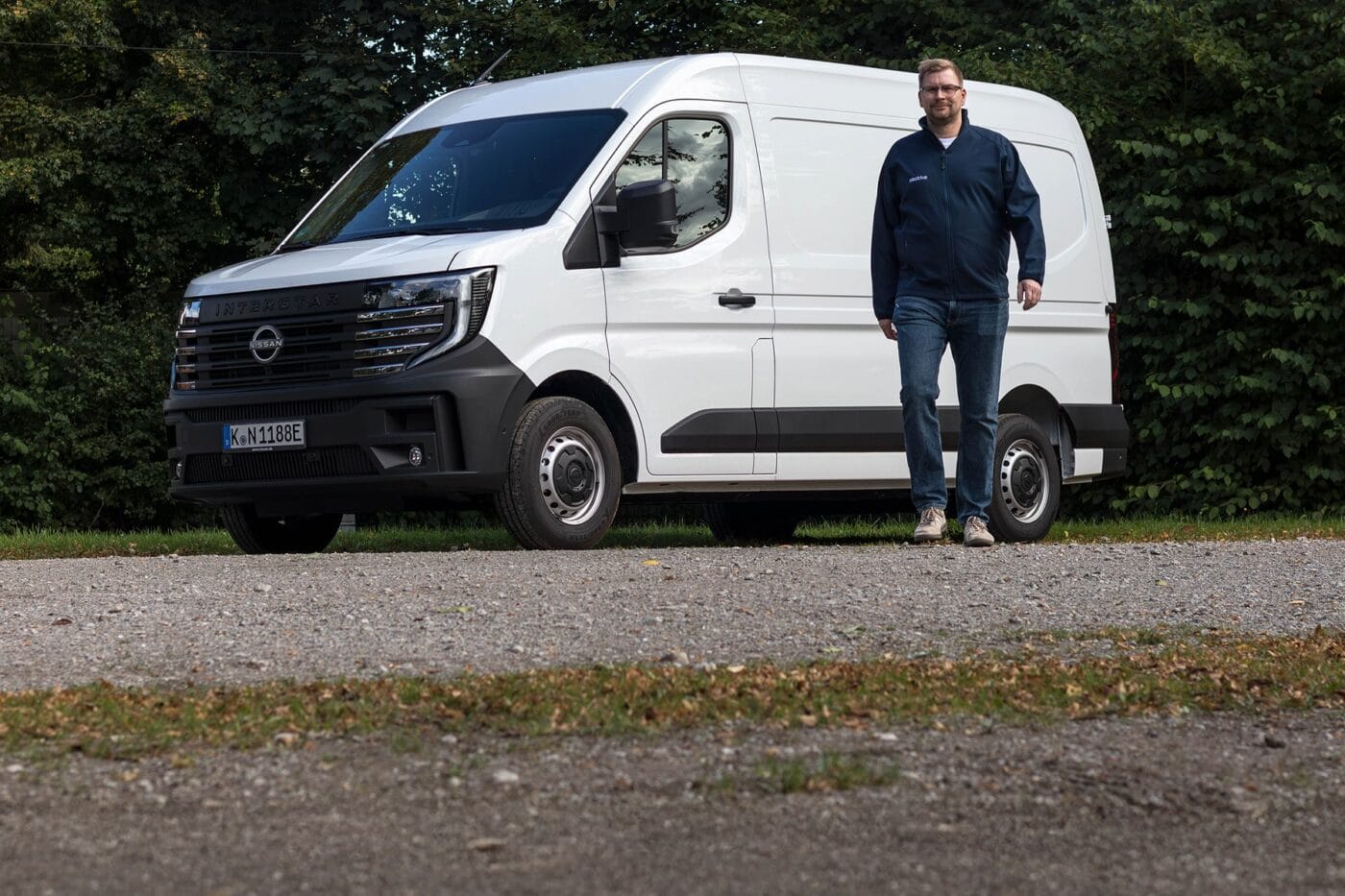
Nissan Interstar-e: A superior electric van with some drawbacks
Through its alliance with Renault, Nissan launched the first Interstar with an electric drive last year. The electric van is based on the same platform as the fourth generation of the Renault Master E-Tech. Visually, the electric Interstar hardly differs from its combustion engine counterpart. However, it also inherits the characteristics of its counterpart.
Regardless of the drive system, this means that, compared to its (combustion engine) predecessor, the new Nissan van offers larger dimensions and improved aerodynamics. According to the manufacturer, air resistance has been reduced by around 20 per cent – achieved, among other things, by a more steeply raked windscreen and a sloping roof line. Nissan has also expanded the customisation options: Numerous conversions are now available ex works, including tippers, flatbeds and the classic panel van. The latter variant now has a side door that is four centimetres wider and a loading area that is ten centimetres longer. Overall, the vehicle length has increased by 13.7 centimetres, while the width has only increased slightly, and the height remains unchanged. The wheelbase, on the other hand, has been shortened by just under ten centimetres.
For the test drive, we had access to the Interstar-e in the L2H2 panel van version. Nissan also offers the model as an L3H2. While the diesel version is also available as an L3H3, this option is not available for the electric counterpart. Regardless of which version you ultimately choose, the dimensions of the driver’s cab remain the same.
Interior on par with passenger car
As soon as you get in, it’s clear that Nissan has placed great emphasis on clarity and ergonomics. It goes without saying that a van is designed for practicality rather than comfort. However, Nissan has managed to make the cockpit of the Interstar-e as comfortable as you would expect to find in a passenger car.
Although the Japanese manufacturer does not offer the same detailed seat configuration as Mercedes-Benz in the Sprinter, the factory-fitted seats are surprisingly comfortable – even on longer journeys. Behind the height- and depth-adjustable steering wheel, the driver looks at a clearly laid out digital instrument panel. To the right of this is a touchscreen that is slightly tilted towards the driver. As is familiar from the Renault Master, it runs on an Android-based operating system. If desired, you can connect to the infotainment system via Android Auto or Apple CarPlay (also wireless). This is practical, but also necessary, as the Interstar does not yet have its own navigation system. According to Nissan, this is not due to be introduced until summer 2026, together with Nissan Connected Services.
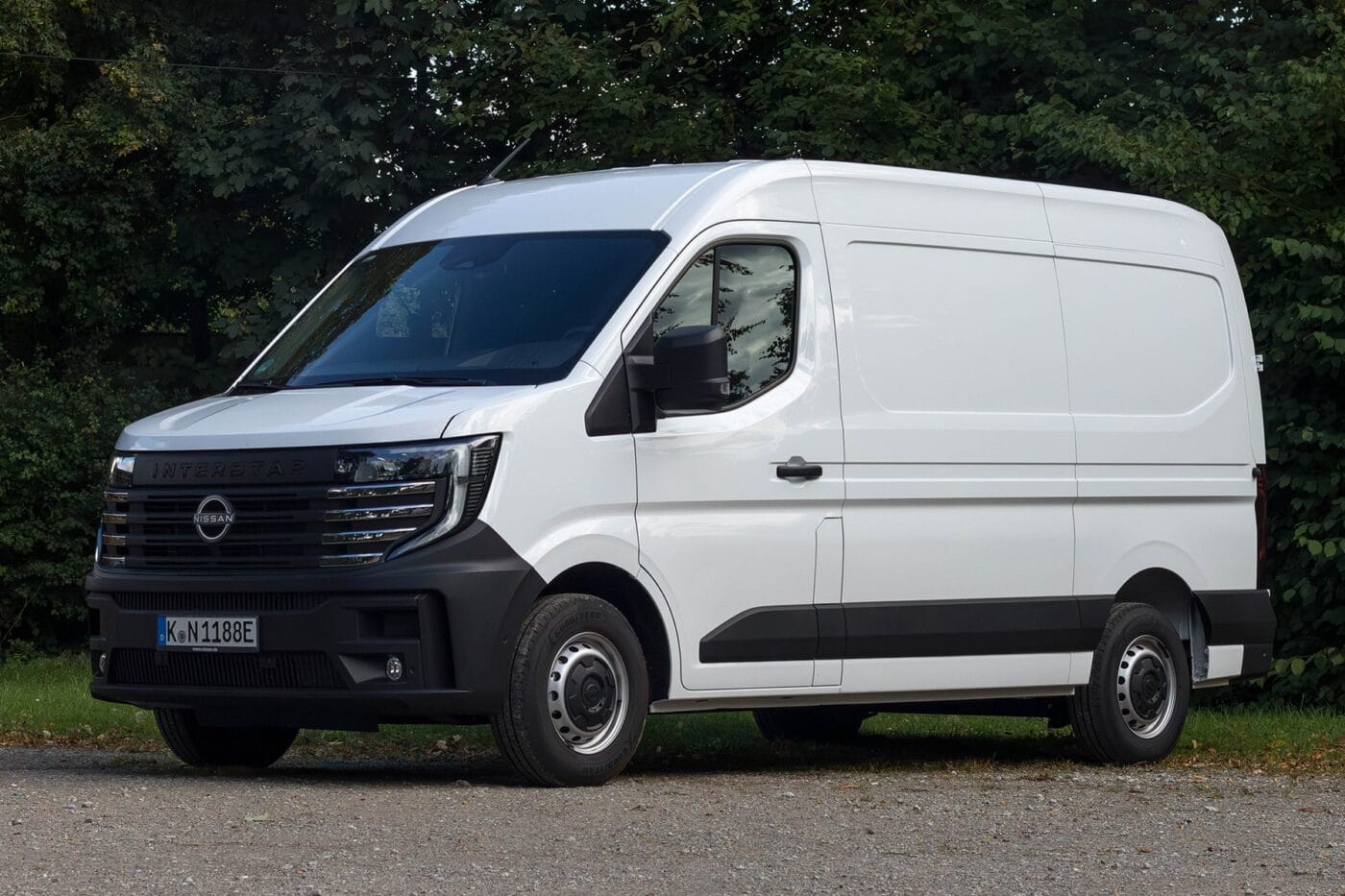
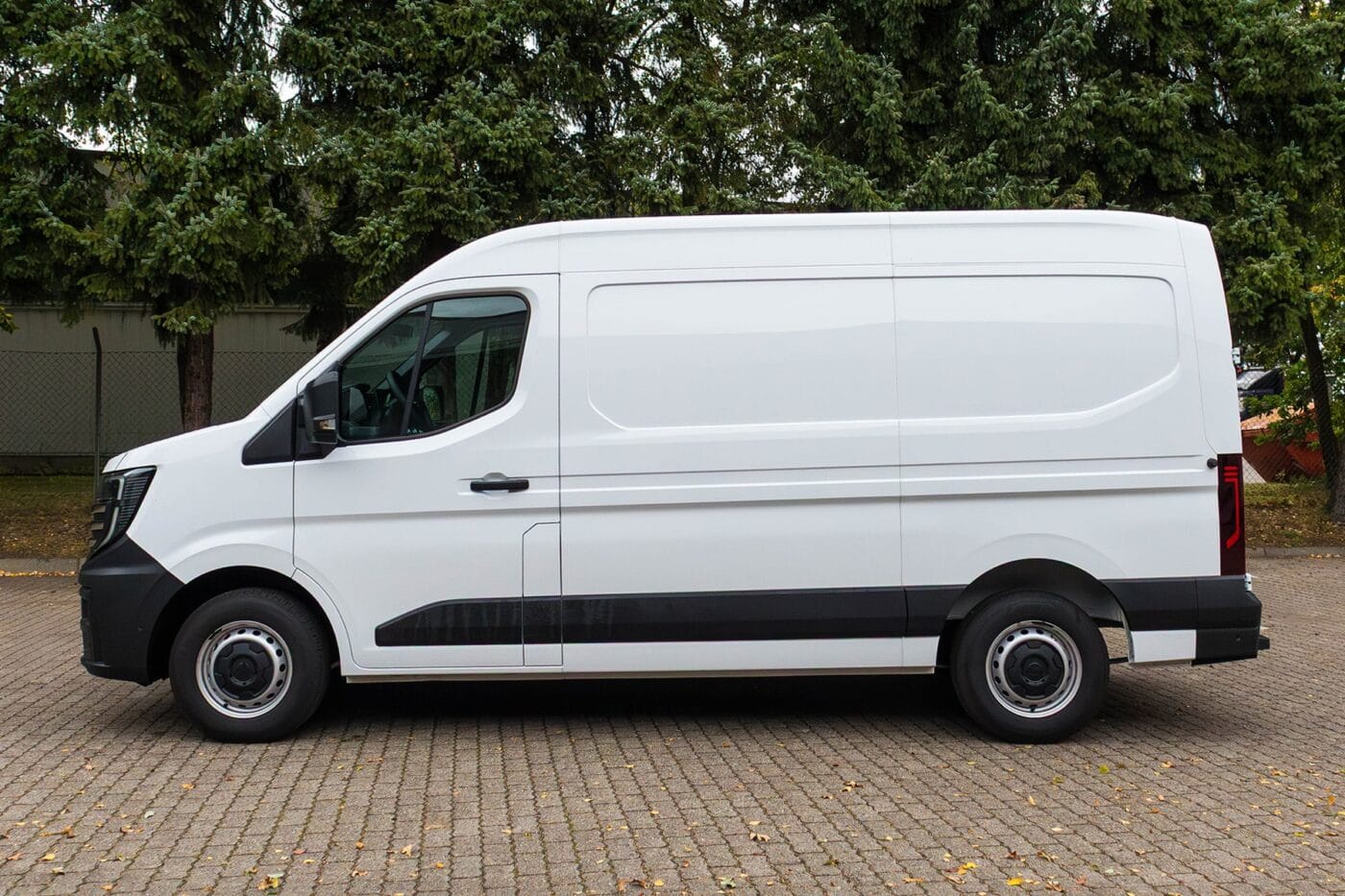
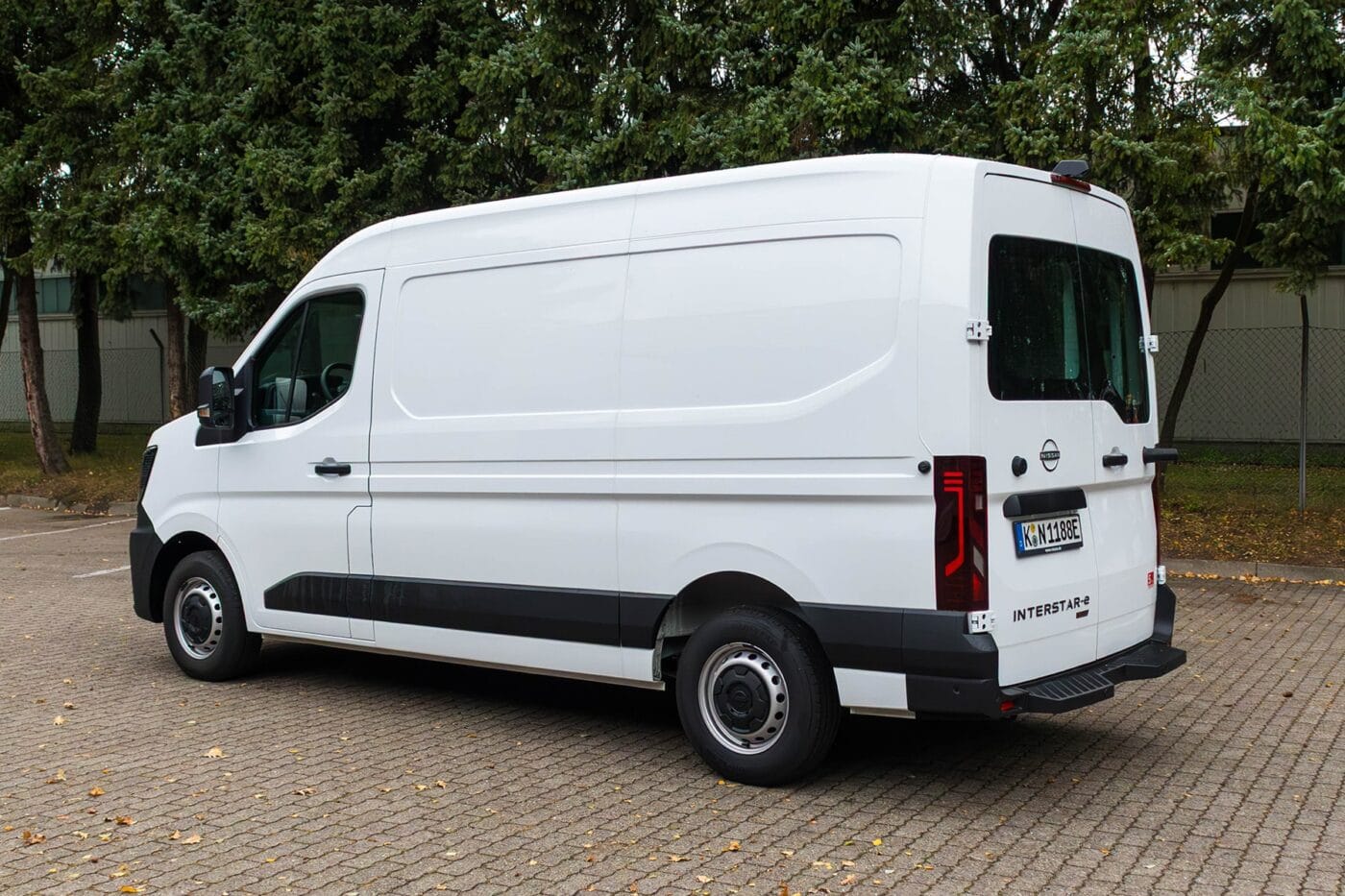
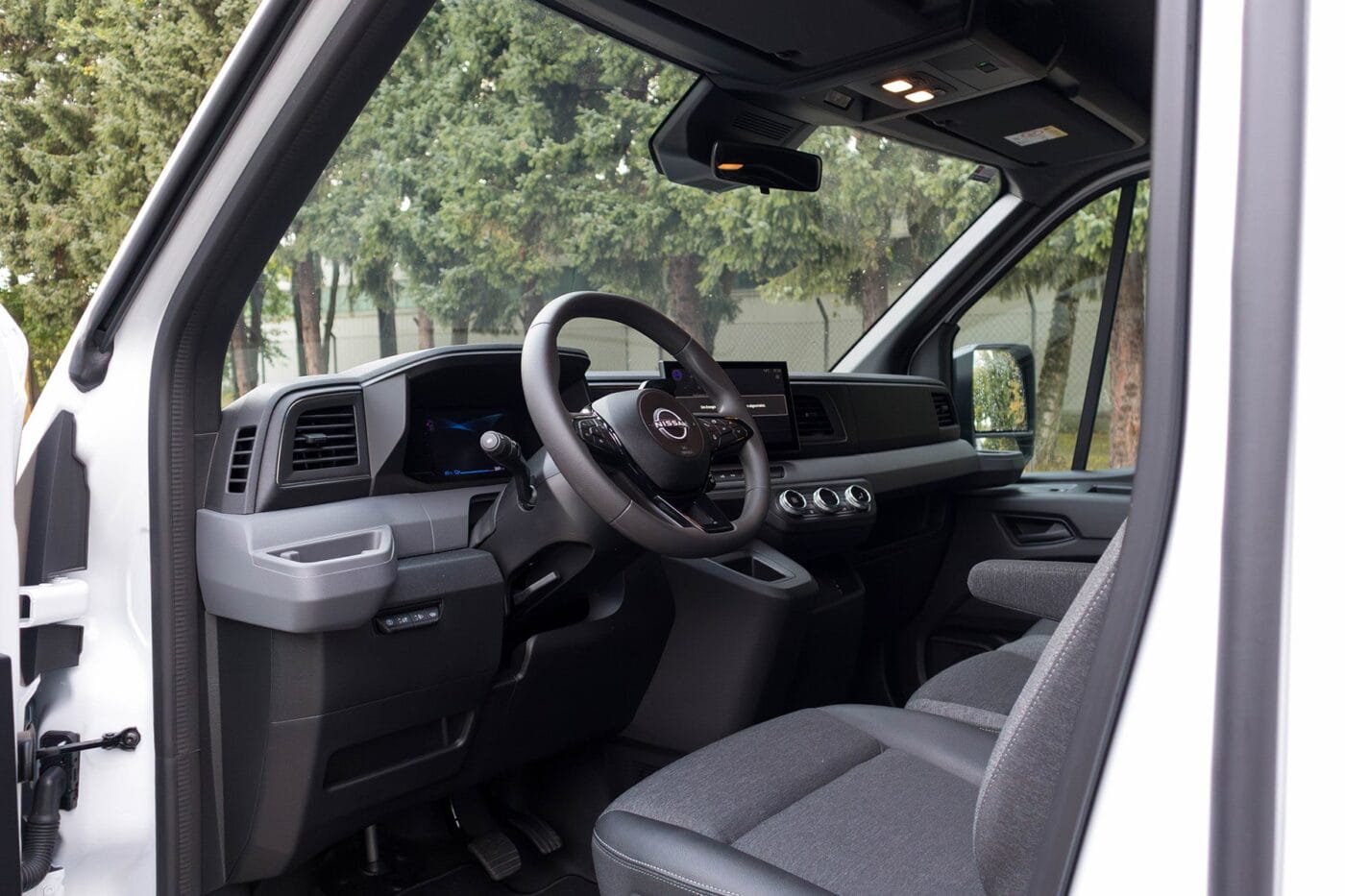
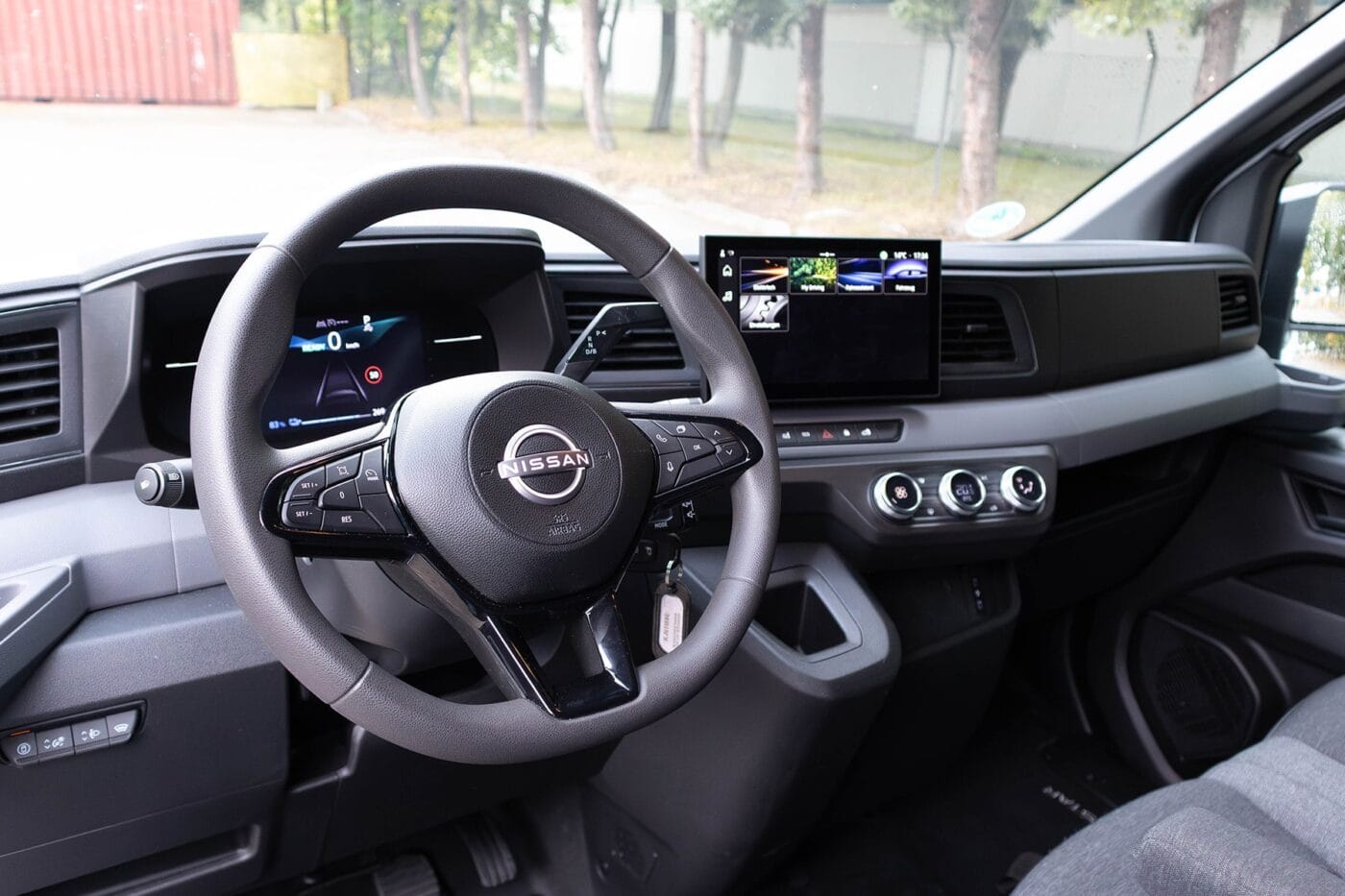
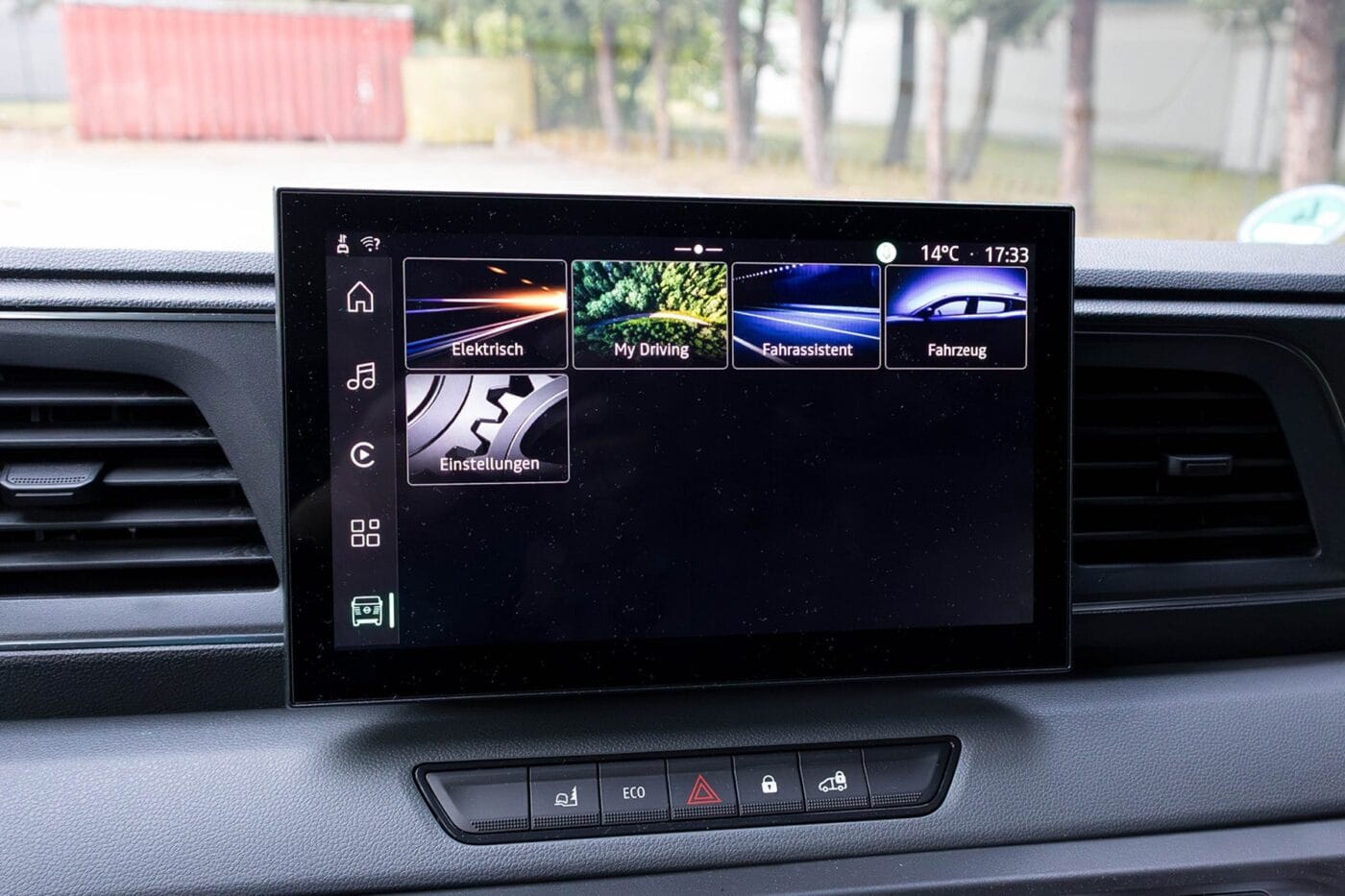
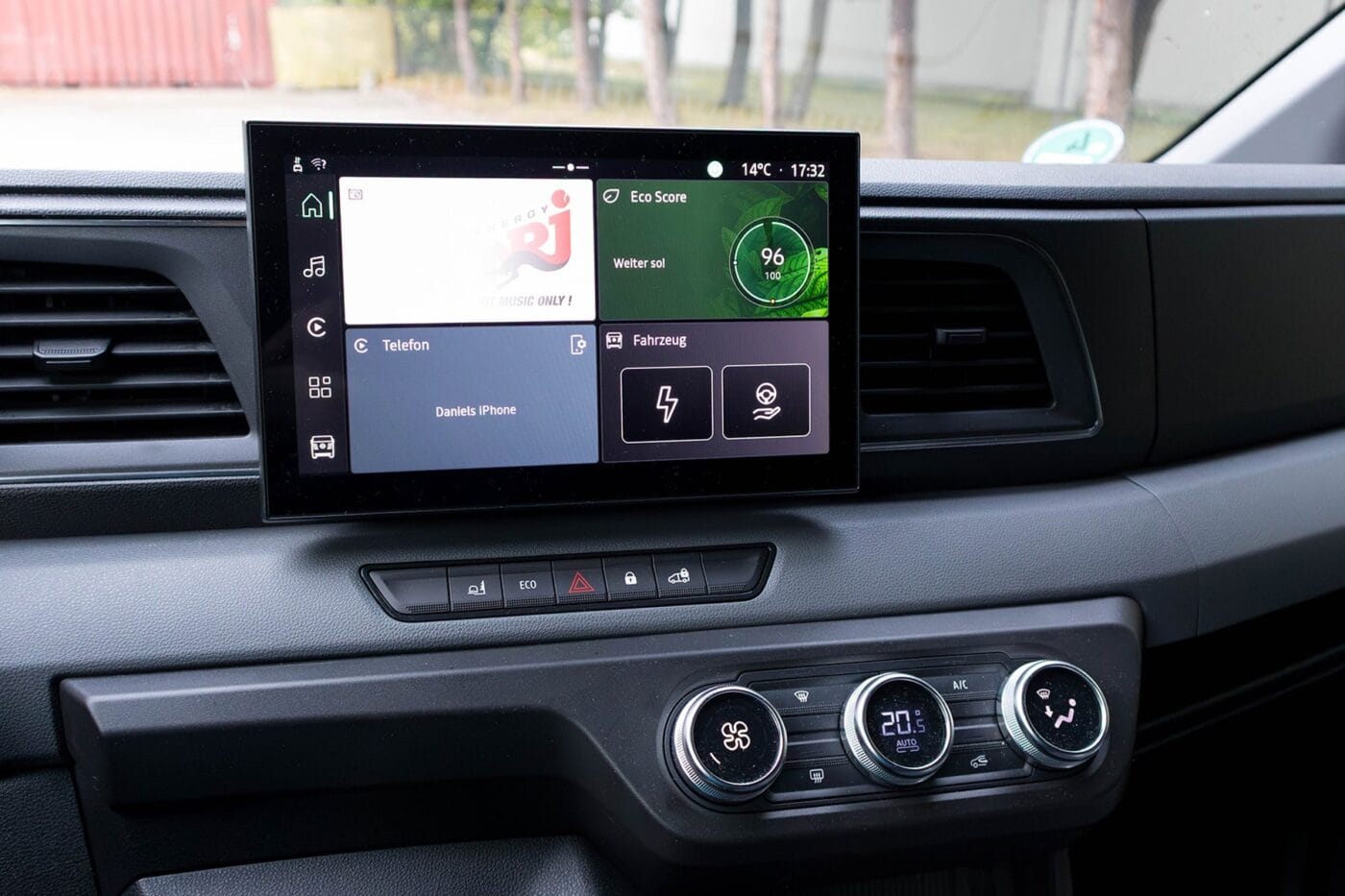
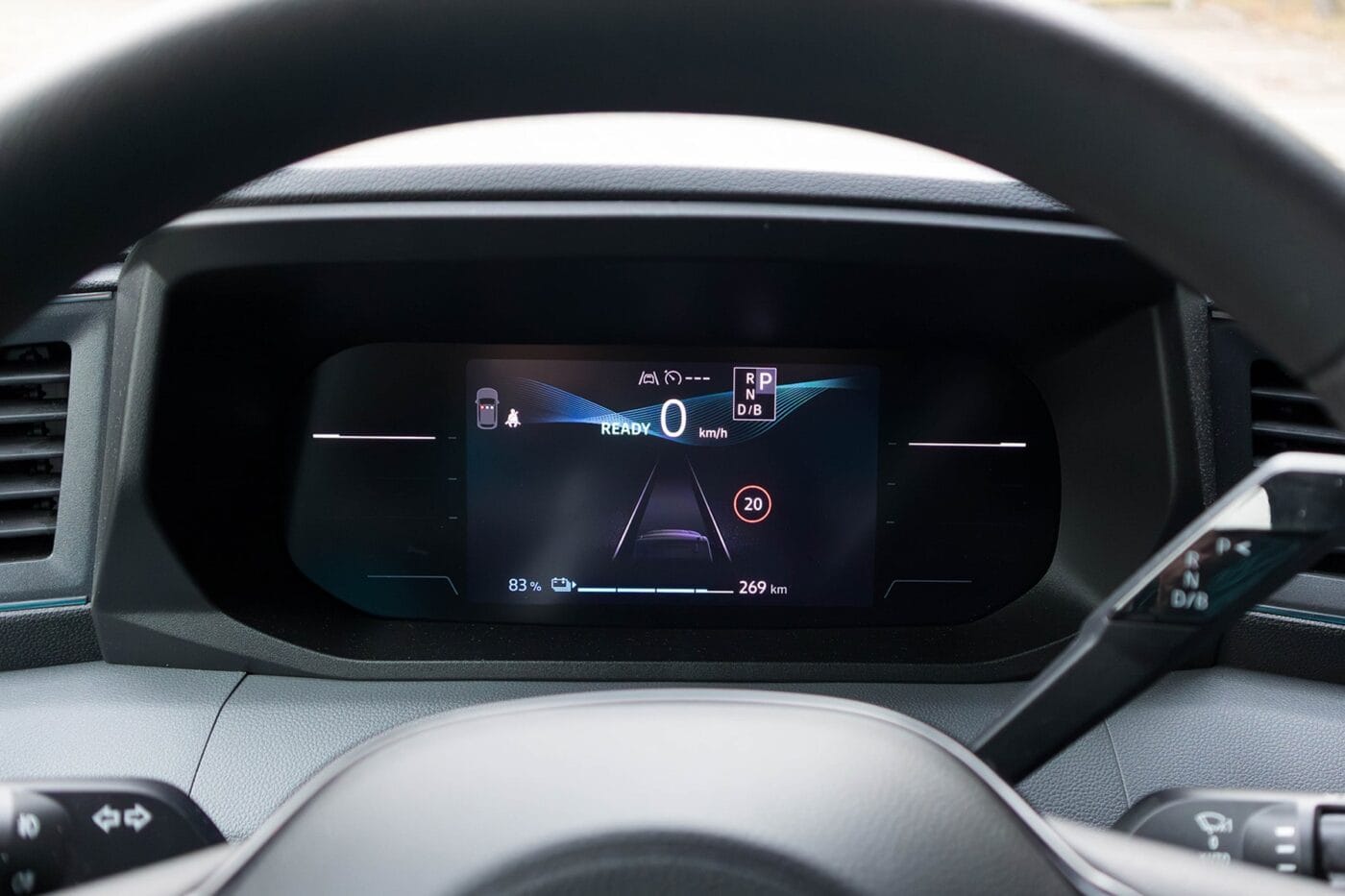
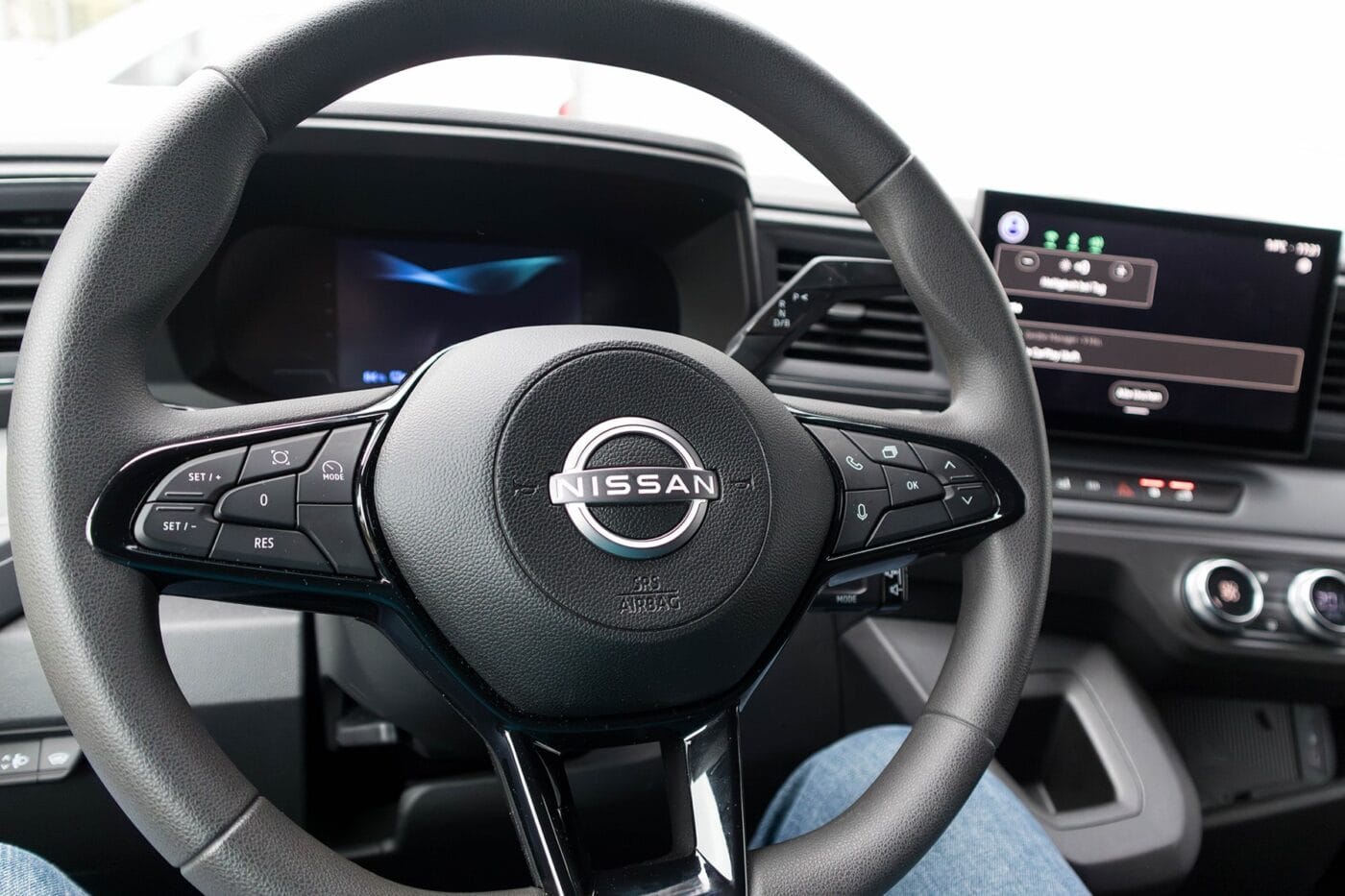
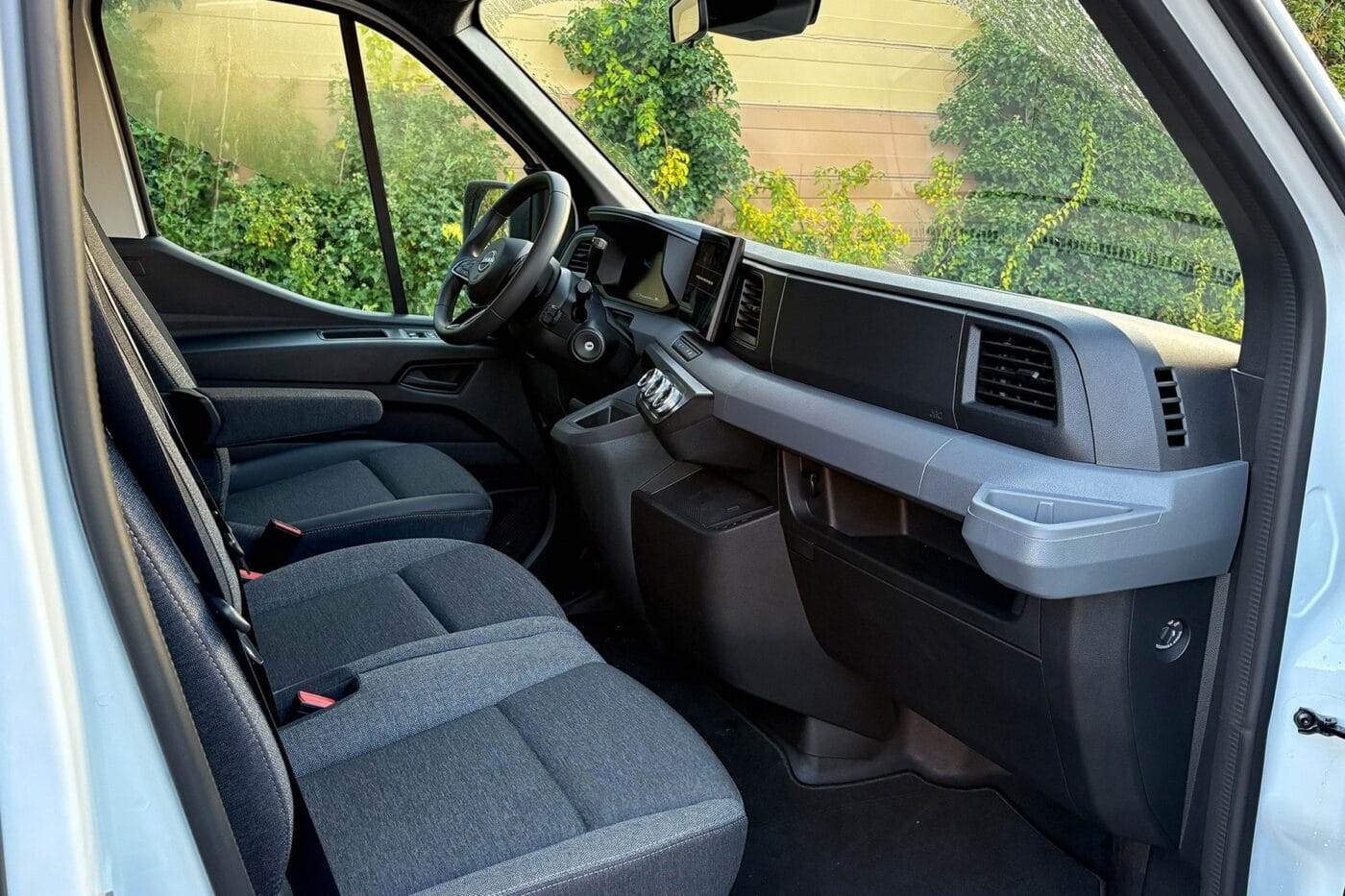
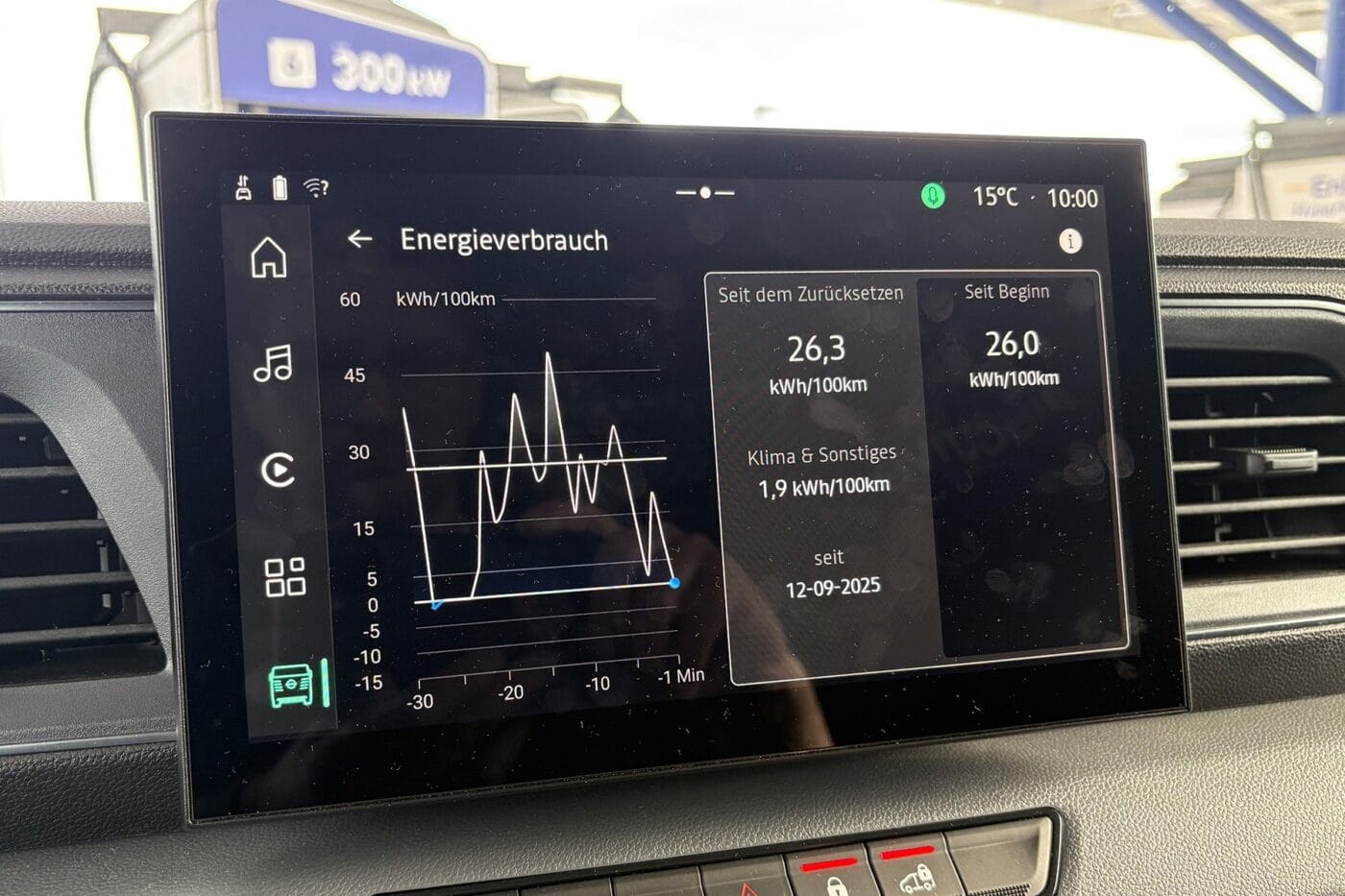
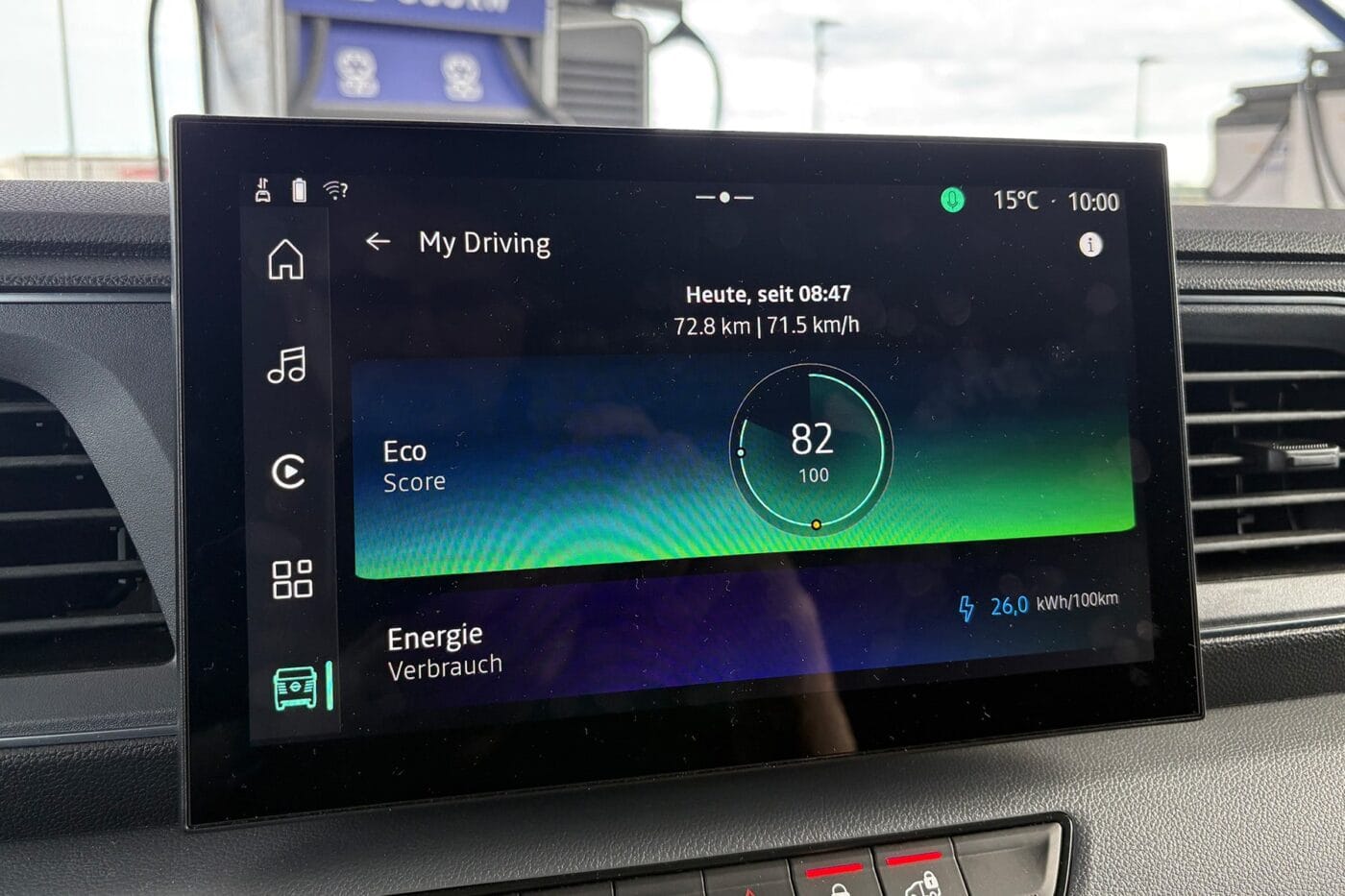
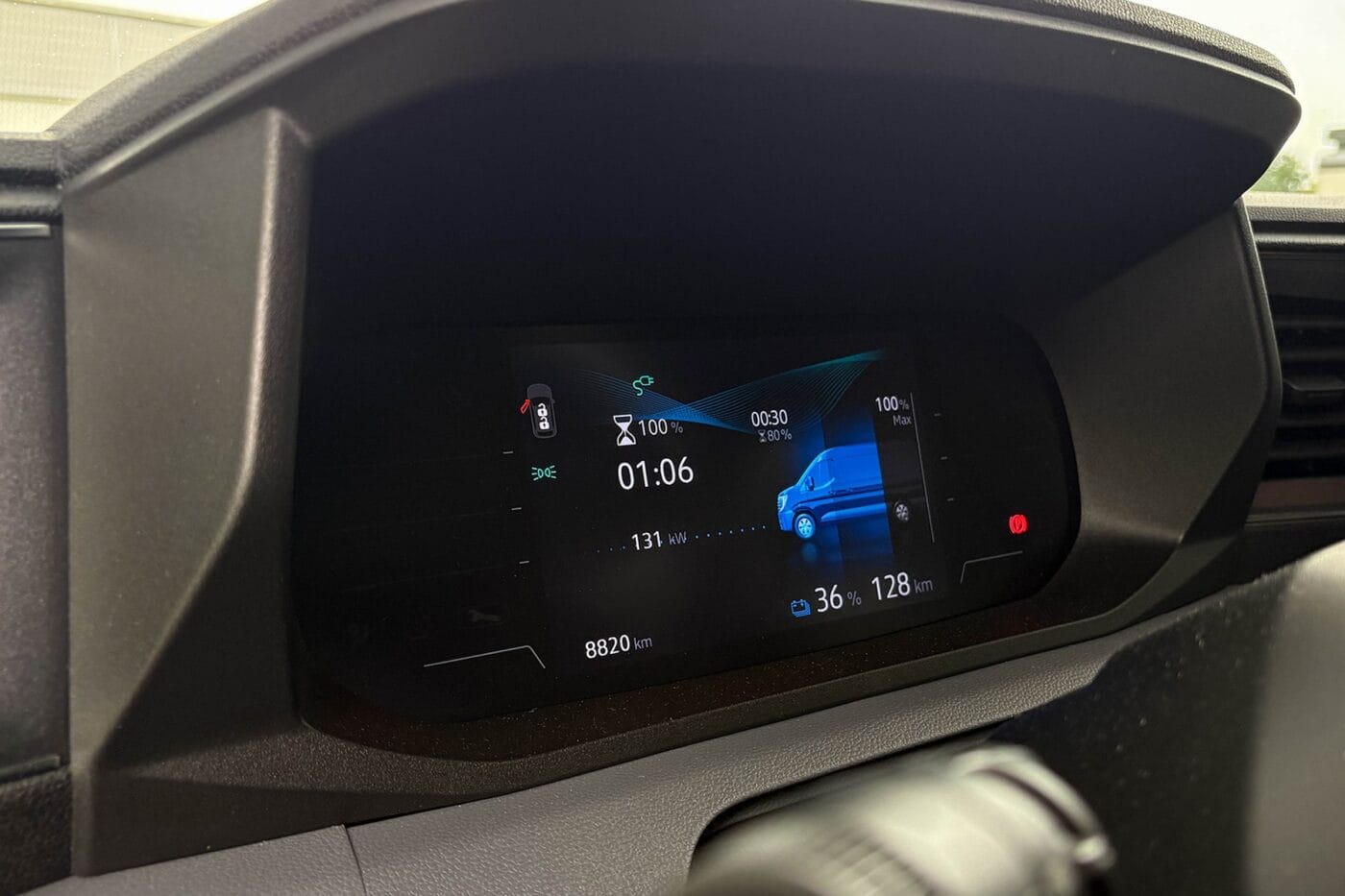
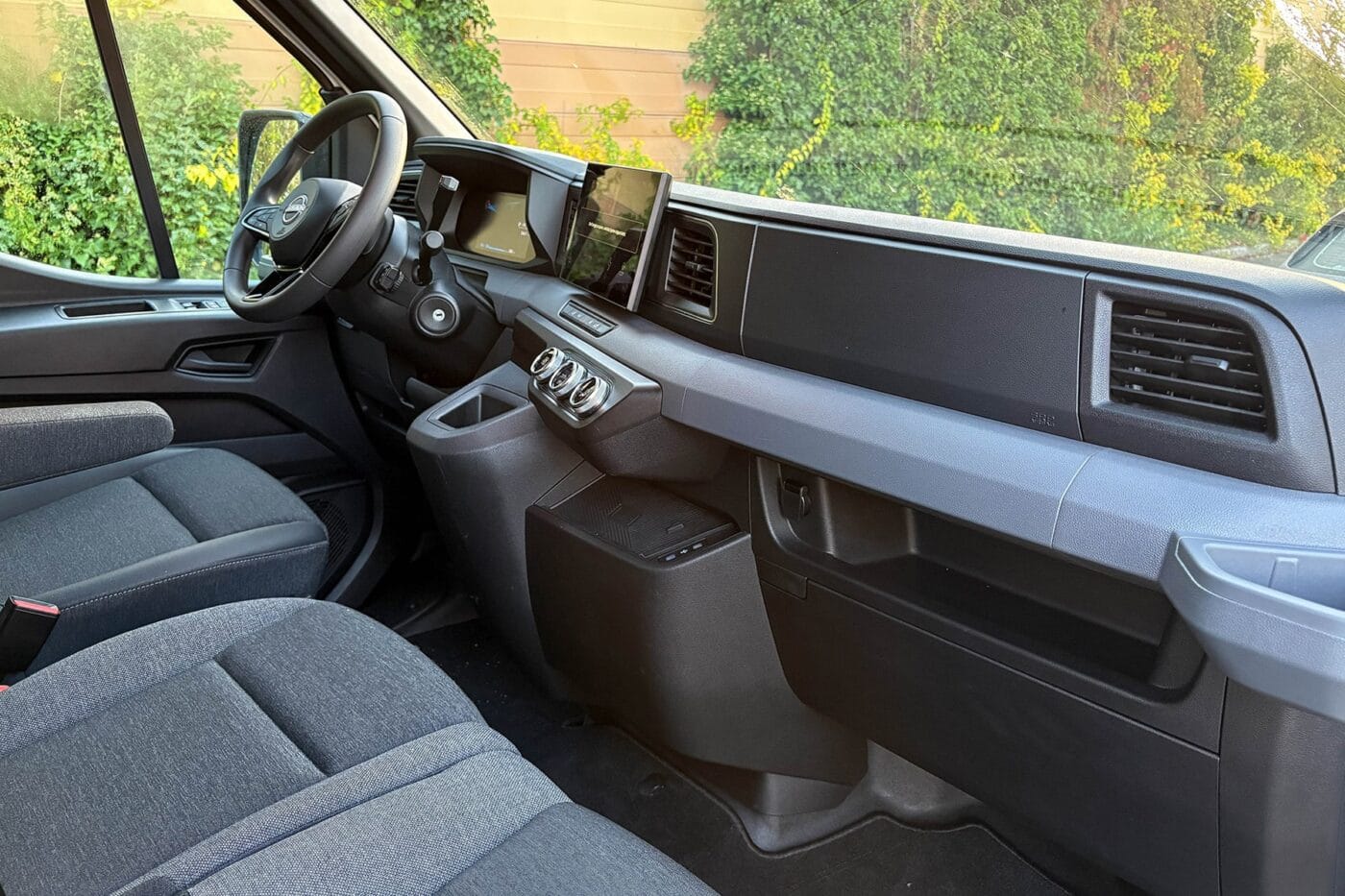
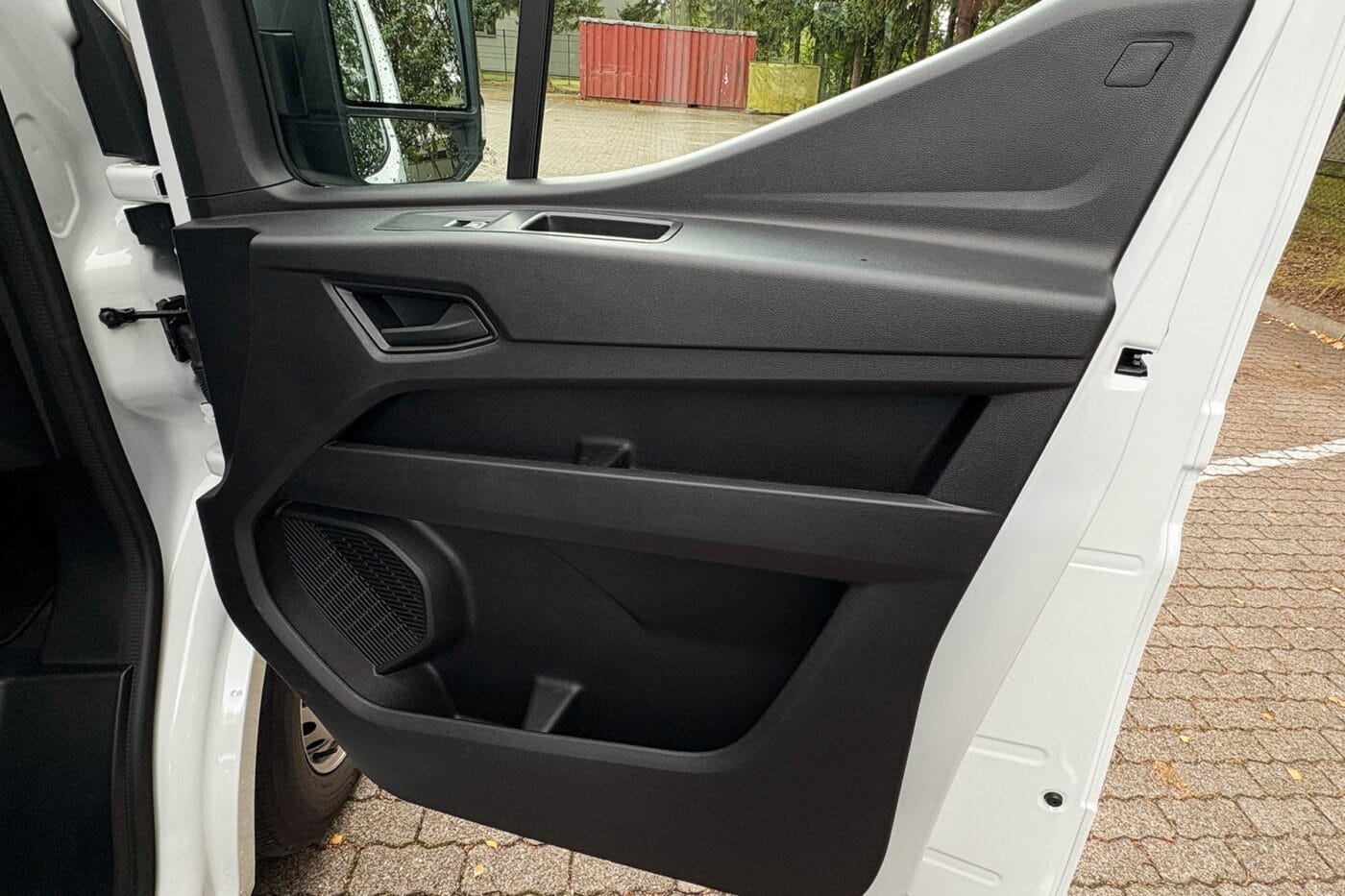
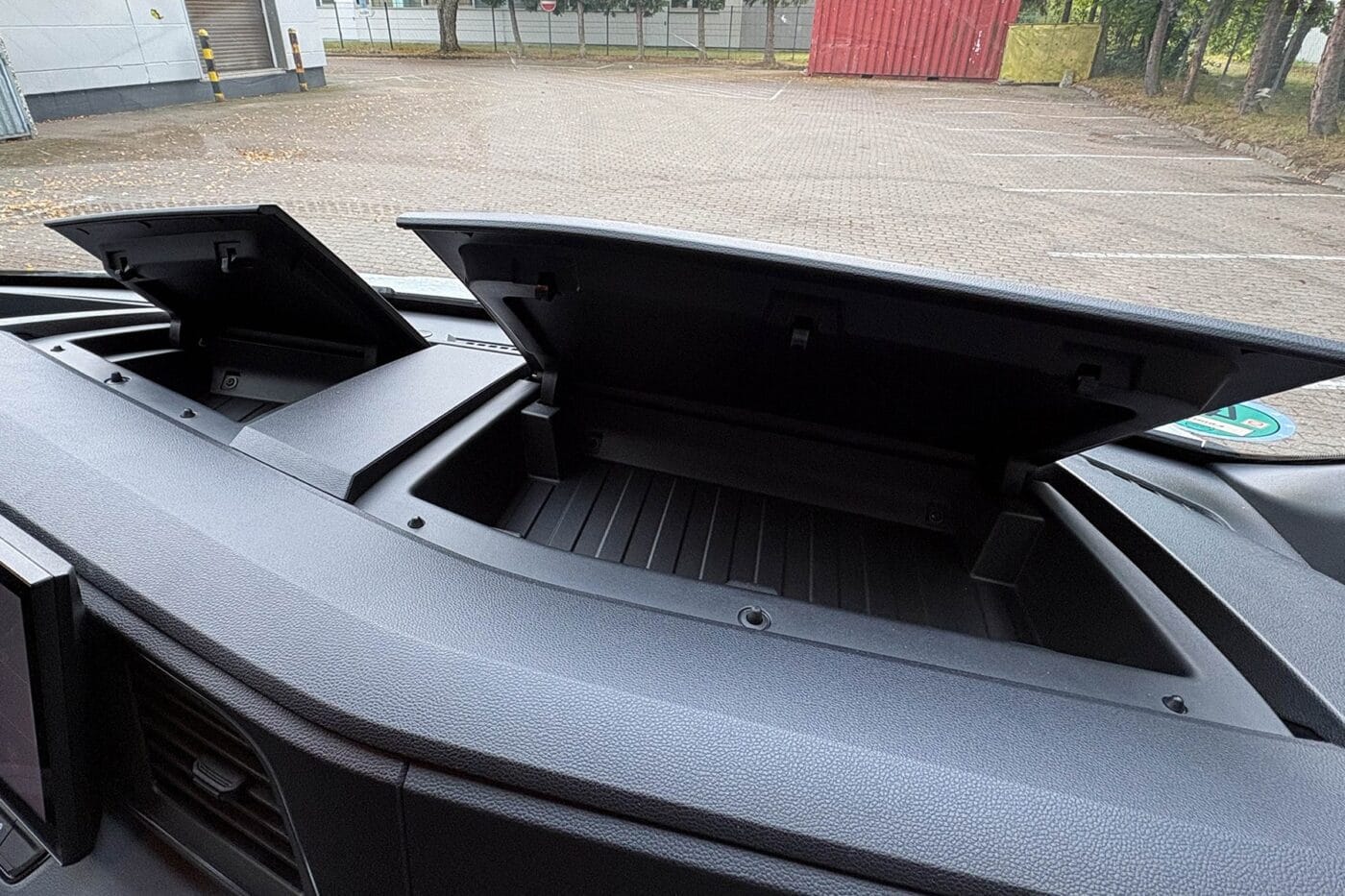
The air conditioning, on the other hand, is still operated in the traditional manner via three large rotary controls. That’s fine in my opinion. What is more irritating is that the electric Interstar still comes with an ignition lock and can only be started using this. The driving mode is selected via a steering column lever. Nissan offers a choice between normal forward gear or a so-called ‘brake’ mode, which provides stronger recuperation when the accelerator pedal is released. However, one-pedal driving is not available in the Nissan electric car. That’s a shame. And before you can set off, you have to release the nostalgic-looking manual handbrake.
Sufficient power, high driving comfort
Under the bonnet of the test car was a 105 kW electric motor that delivered a maximum torque of 300 Nm. On paper, that doesn’t sound like much for this class of vehicle, but during the test, the performance proved to be sufficient. The Interstar-e leaves its diesel counterparts far behind when pulling away. It only becomes sluggish above 100 kph. However, at the locked maximum speed of 120 kph at the latest, its combustion engine counterparts pull away – they can reach up to 177 kph.
The Interstar-e’s strengths lie in its driving comfort. Thanks to the electric drive, there are no vibrations as with a combustion engine, nor any jerky movements due to gear changes. The significantly lower noise level in the interior also contributes to a more relaxed driving experience. The chassis is tuned for comfort. The front axle in particular absorbs potholes well, in contrast to the rear axle. The direct steering and the turning circle, which has been reduced by 1.5 metres thanks to a wheelbase that is almost ten centimetres shorter, contribute to the manoeuvrability of this electric van.
Above-average range
The Interstar-e makes a clear statement when it comes to range. With the 87 kWh (net) battery installed in the test car, Nissan promises up to 410 kilometres according to WLTP. This is one of the best figures in this segment. There is also a basic version with 40 kWh and 96 kW drive power, which has a range of around 175 kilometres. A glance at the competition shows that the Stellantis models with around 110 kWh manage around 424 kilometres, the Mercedes eSprinter achieves 310 to 440 kilometres depending on the battery size (81 or 113 kWh), and even Ford’s E-Transit with its 89 kWh battery manages ‘only’ 402 kilometres.
The Interstar-e also performed well in testing: at outside temperatures of around 20 degrees, consumption settled between 22 and 29 kWh/100 kilometres. Depending on the driving profile, this resulted in ranges between 400 and around 300 kilometres. The higher value is mainly achievable in city driving and at optimal temperatures. Particularly noteworthy during the test period was a distance of around 260 kilometres, around 80 per cent of which was on the motorway. At the end, consumption stood at 27.7 kWh/100 km, at an average speed of 79 kph. This demonstrated in practice that the high range compared to the competition is not just on paper.
Deduction in the B grade for charging
At some point, even the electric Interstar’s battery will run out, and then it’s off to the charging station. A positive feature is the standard 22 kW onboard charger that Nissan offers for the version with a large battery. This means that a charging process takes around 3.9 hours. The small 40 kWh battery, on the other hand, has to make do with an 11 kW charger.
The Interstar-e only picks up speed with a fast charger: while the 40 kWh version draws a maximum of 50 kW, the large 87 kWh battery can charge at up to 130 kW. Provided it is at the right temperature, that is. This is because the temperature management system is only half-hearted: although the battery is actively cooled, there is no heating system. The charging power may be reduced if several fast charging processes are carried out in succession. And even with a cold battery, the fast charger is slower. This is not necessarily a serious drawback for an electric van. However, if you are planning a long journey, you should be aware of this. I was unable to test the extent to which the charging power is reduced.
Once the battery has reached its optimal temperature, charging from 15 to 80 per cent should take around 32 minutes. This factory specification was also confirmed in the test. For the standard charging range from 10 to 80 per cent, I clocked 34 minutes. The Interstar-e started directly at 125 kW with a SoC (state of charge) of 9 per cent. It reached the plateau of 130 kW at 24 per cent and maintained it until 45 per cent, before the power dropped to 94 kW. It then rose temporarily to just under 100 kW before another drop in power set in at around 72 per cent.
Even though a Ford E-Transit with 89 kWh only needs 28 minutes to go from zero to 80 per cent. Nevertheless, the Interstar-e has no reason to hide when it comes to charging performance. It is well within the mid-range. And in the end, a few minutes’ difference is hardly significant in everyday use.
Numerous assistance systems
In addition to its range and charging capacity, the Interstar-e is also state-of-the-art in terms of equipment. Among other things, the van is equipped with driver and fatigue assistance, intelligent emergency braking assistance with pedestrian and cyclist detection, crosswind assistance, lane departure warning and speed detection – which, compared to the other assistance systems, works poorly and does not always recognise signs correctly. Incidentally, this also applies to the diesel version.
However, the Interstar-e is already available with the N-Connecta equipment line and offers even more in the basic version. This means that the EV version also comes with a 10.1-inch touchscreen, electric windows, light and rain sensors, fog lights, 12 V sockets in the cockpit and cargo area, a double passenger seat with folding backrest, a ‘comfort’ driver’s seat with lumbar support, lashing eyes in the cargo area and automatic climate control. However, the rear-view camera, which allows rear visibility when fully loaded, is particularly practical.
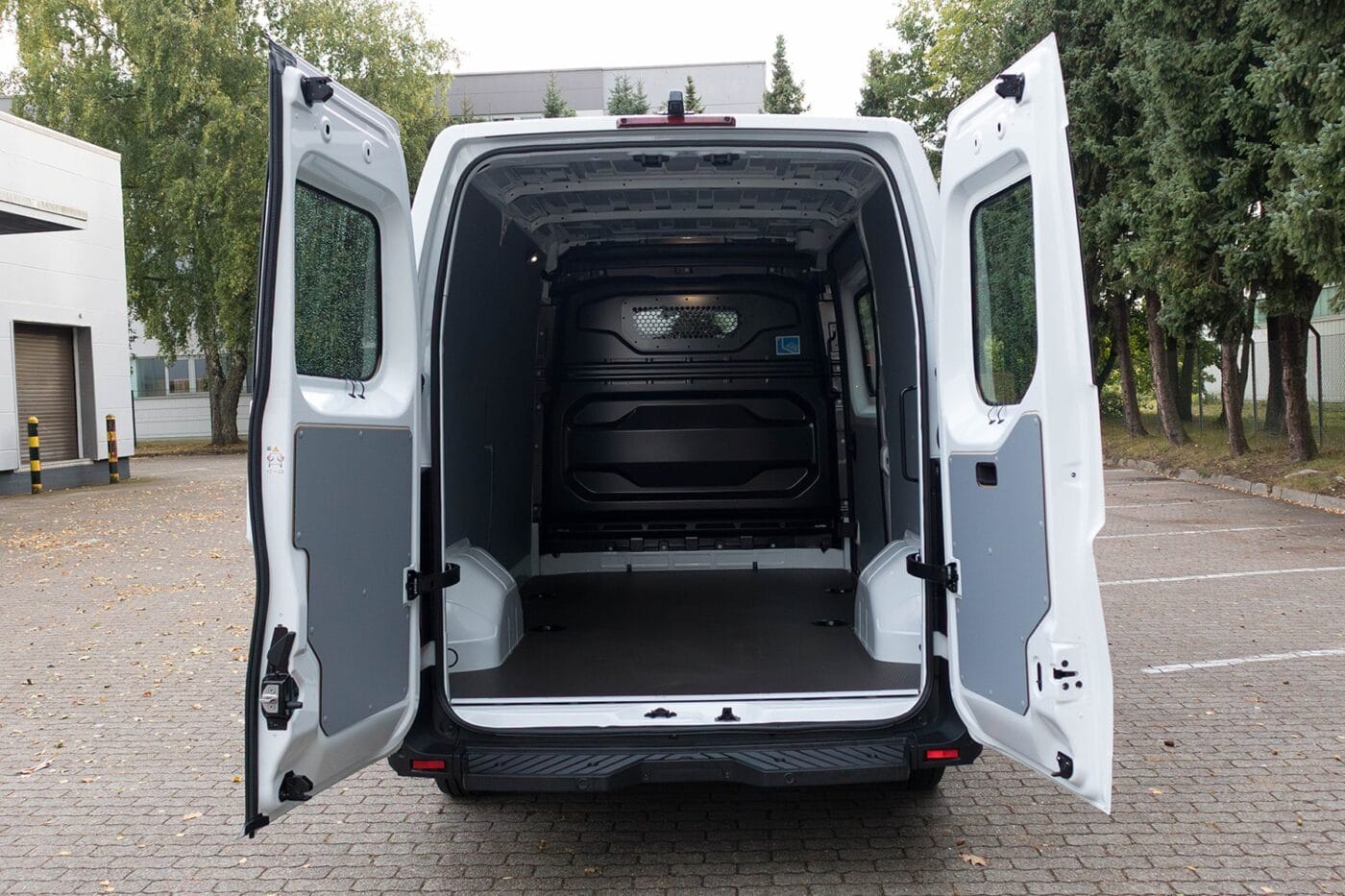
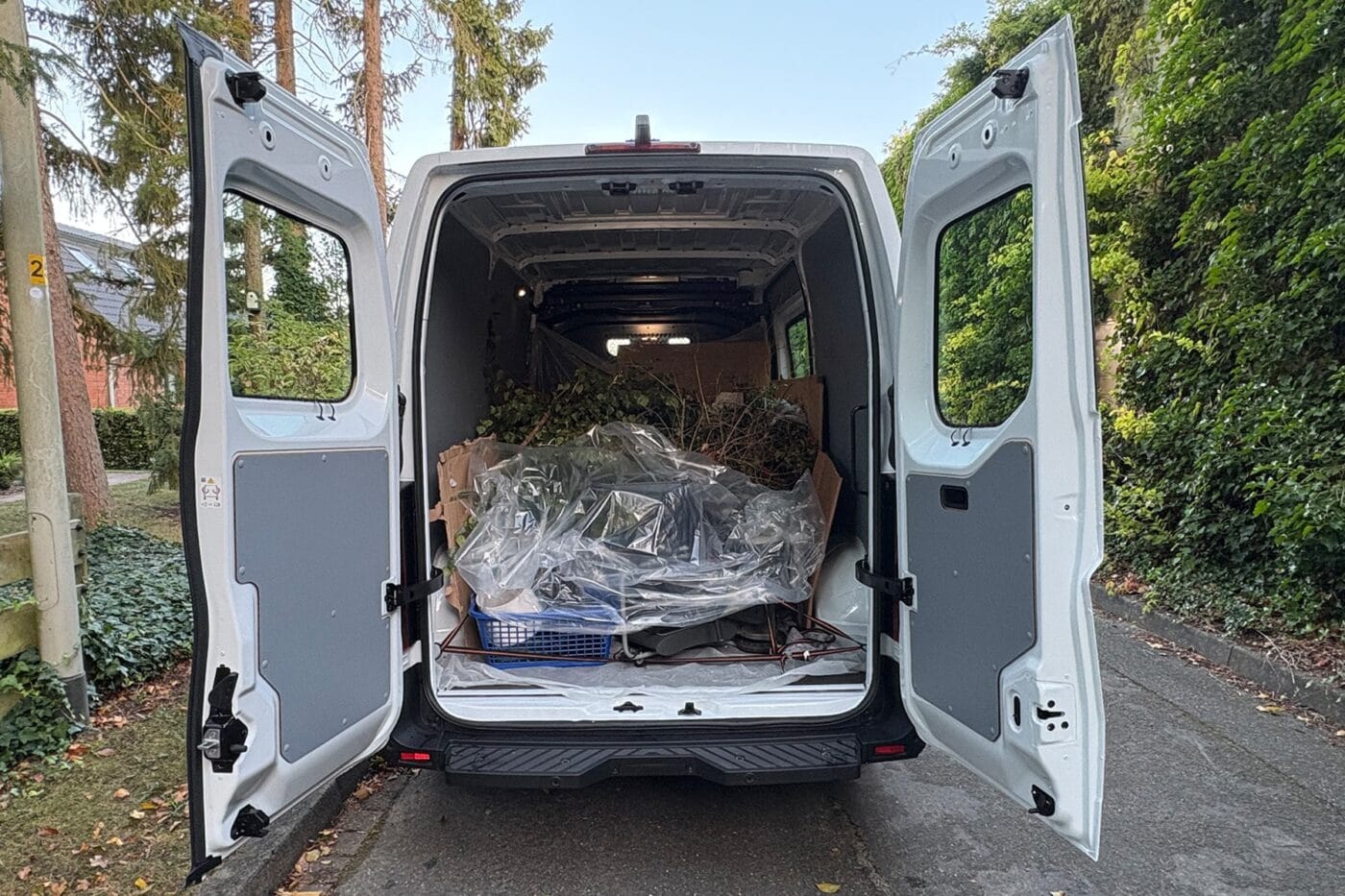
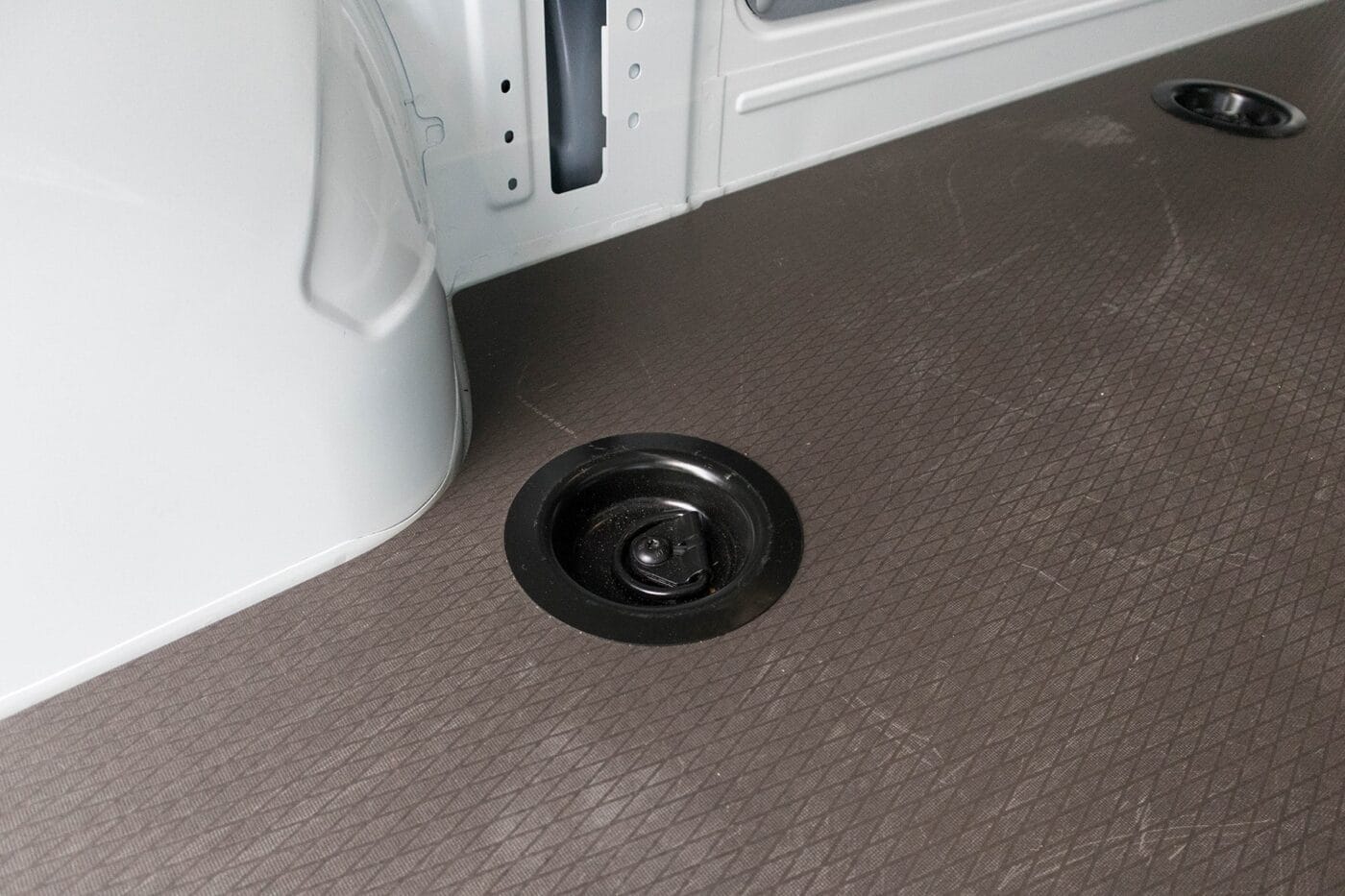
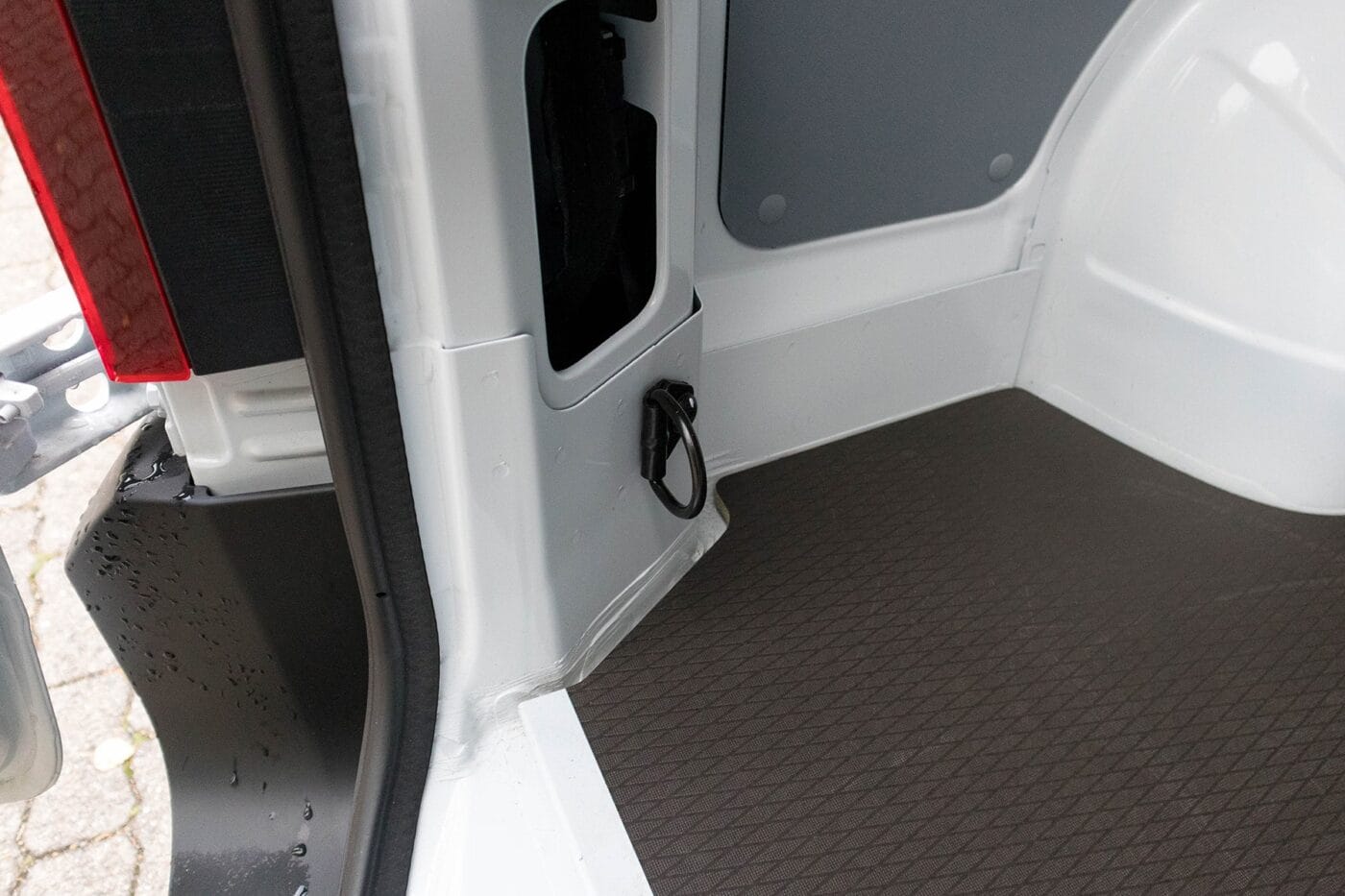
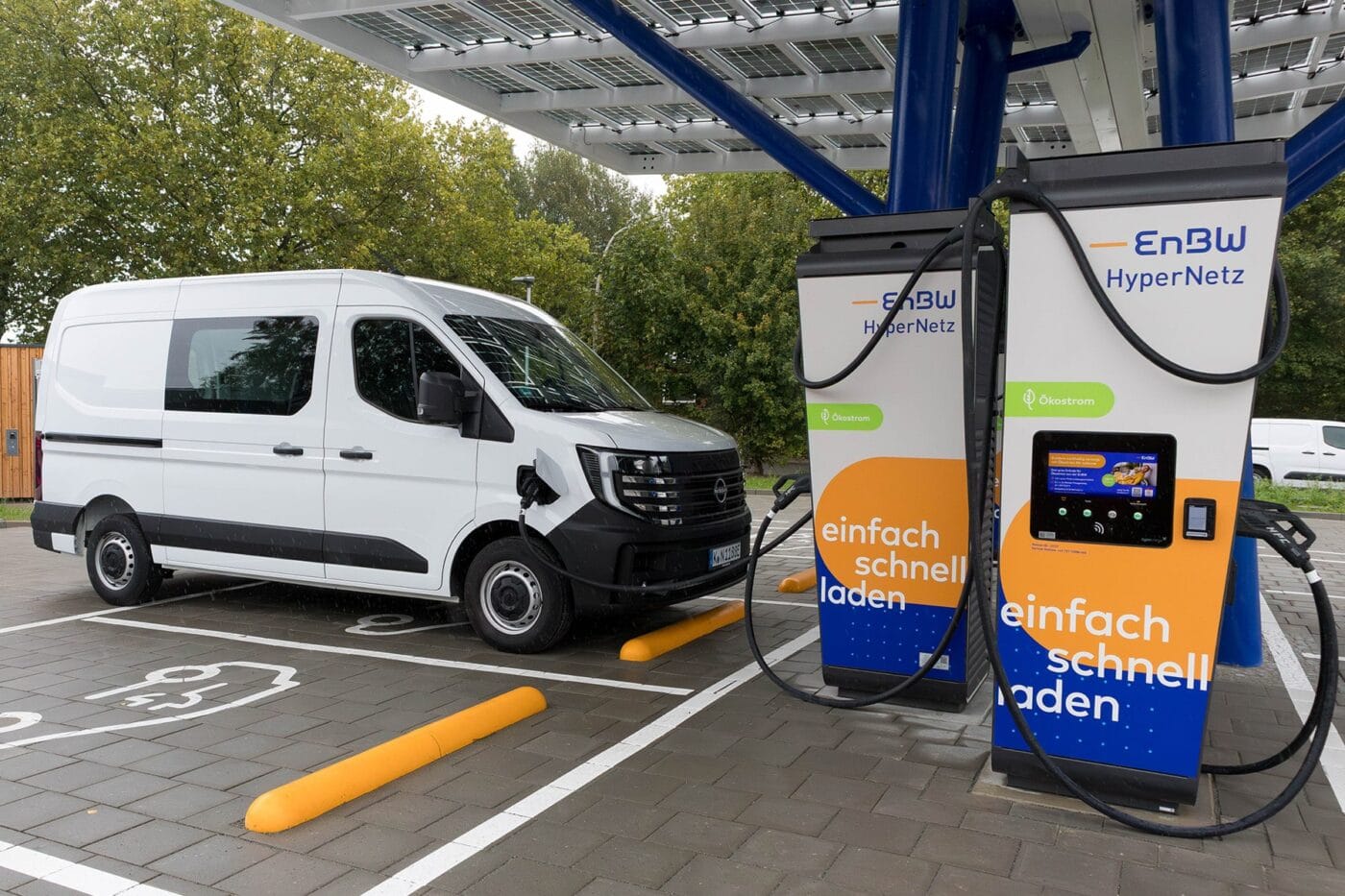
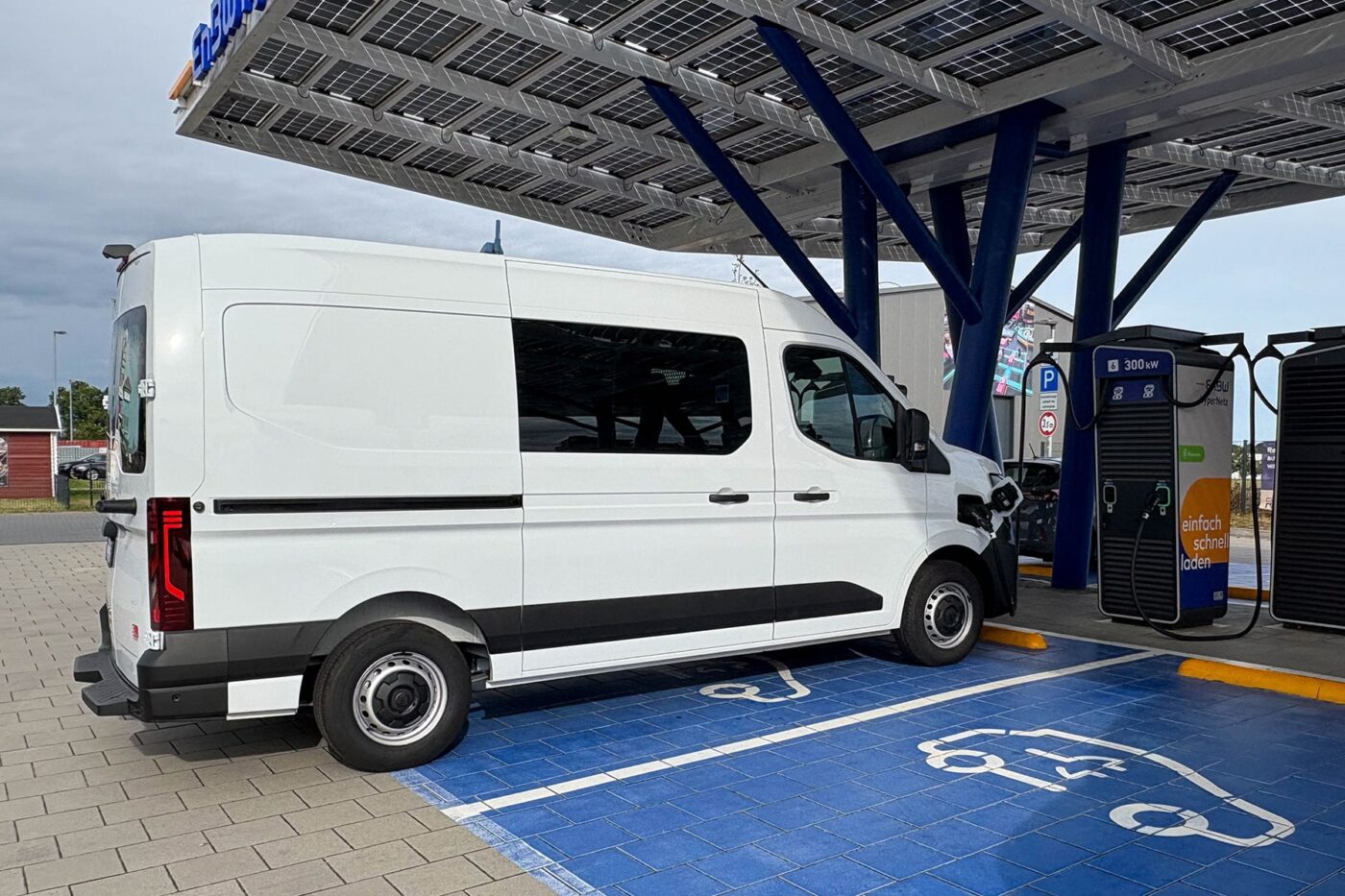
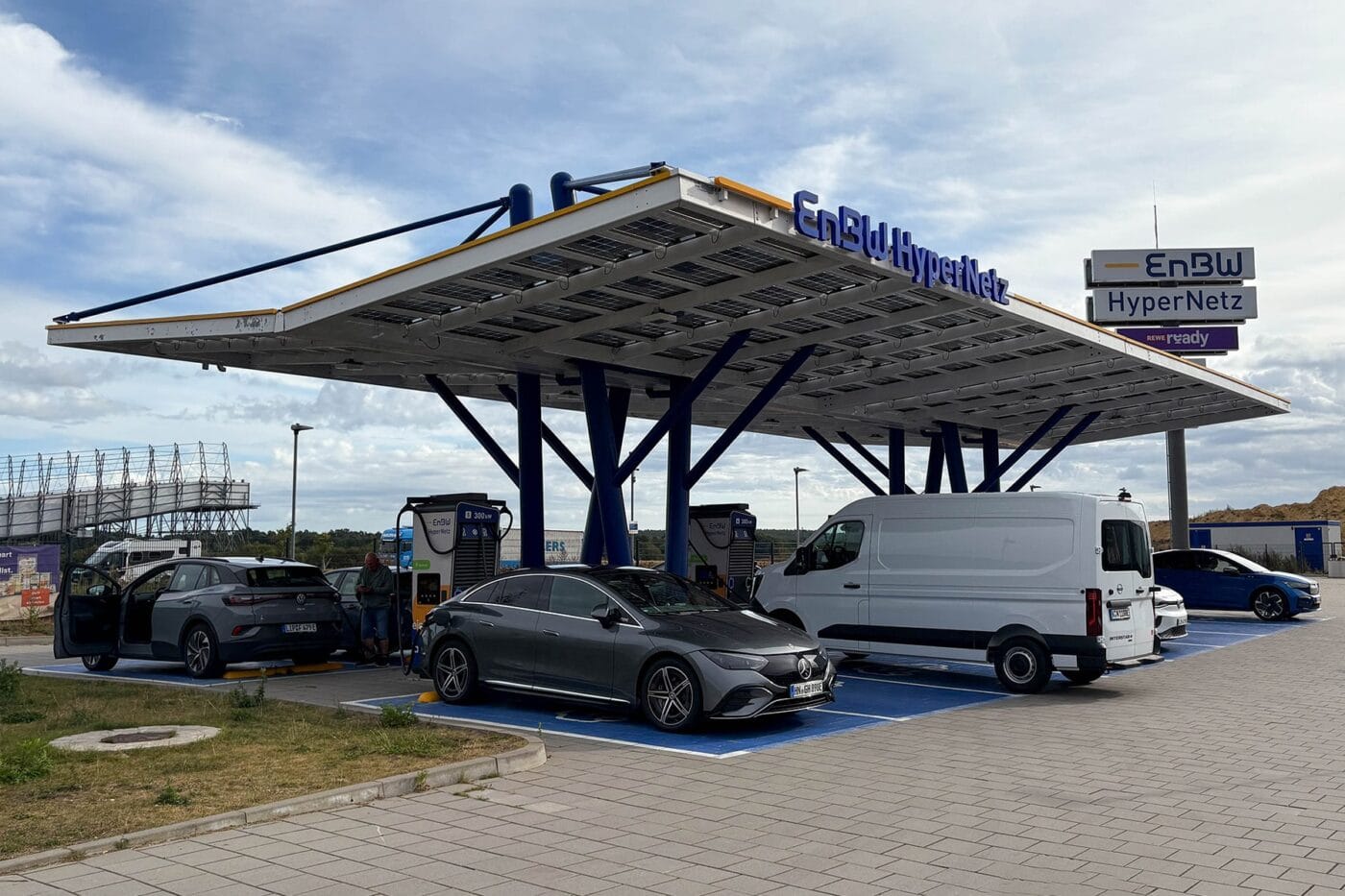
Compromises in payload and towing capacity
Despite all the technology, it is important to remember that what ultimately counts is what fits inside – and what can be attached to the rear. Depending on the configuration, the diesel version offers a payload of at least 1,096 and a maximum of 1,447 kilograms as an L2H2 and from 1,050 to 1,375 kilograms as an L3H2, while the electric Interstar offers around 200 (L2H2 893 kg, L3H2 822 kg) to 400 kilograms (L2H2 1,045 kg, L3H2 965 kg) less. Depending on the intended use, trade and conversion, this reduction can quickly become significant, even if the tank capacity (80 litres) is added to the diesel model. A practical example: in the trades, it is not uncommon to equip both sides of the load compartment with a Sortimo system including floor panelling. That alone weighs around 400 kilograms. Tools and consumables are added on top of that – quickly reducing the remaining payload by several hundred kilograms. That’s something to keep in mind, at least.
So if you are at risk of exceeding the permissible total weight of 3.5 tonnes, you can order the Interstar with the large battery and a load capacity of up to four tonnes (small battery maximum 3.8 tonnes). However, in order to be able to drive this version of the electric transporter with a Class B driving licence in Germany, you must have held this licence for at least two years, receive training and have an entry in your driving licence.
There are also restrictions on the towing capacity. The diesel transporter can tow up to 2.5 tonnes, whereas the electric Interstar can tow a maximum of two tonnes. There are no differences in the roof load, which is 200 kilograms, regardless of the drive type. The load volume is also the same at 10.8 cubic metres (L2H2) and 13 cubic metres (L3H2).
Those who can live with the compromises in terms of payload and towing capacity will find the Interstar-e to be a solid electric van that has few weaknesses – especially when compared to its diesel counterpart. The only drawback is the price: while the comparable diesel model costs between 35,890 euros and 42,390 euros, depending on the transmission, the Interstar-e with a large battery starts at 47,500 euros and the small battery at 46,200 euros. There is currently no federal subsidy that could cover most of the difference. However, there are still a few local subsidy programmes at the state or even district/city level for electric vehicles or even just for the charging infrastructure. And, as with combustion engines, Nissan offers discounts for the Interstar-e that are “dependent on customer group, availability and equipment/version.” This does not make the Interstar-e a bargain, but it does bring it a little closer to the price of a diesel vehicle. And finally, there are also the running costs to consider.
This article was first published by Daniel Bönnighausen for electrive’s German edition

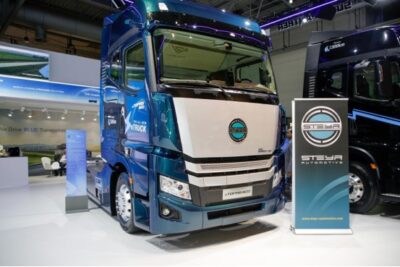


0 Comments